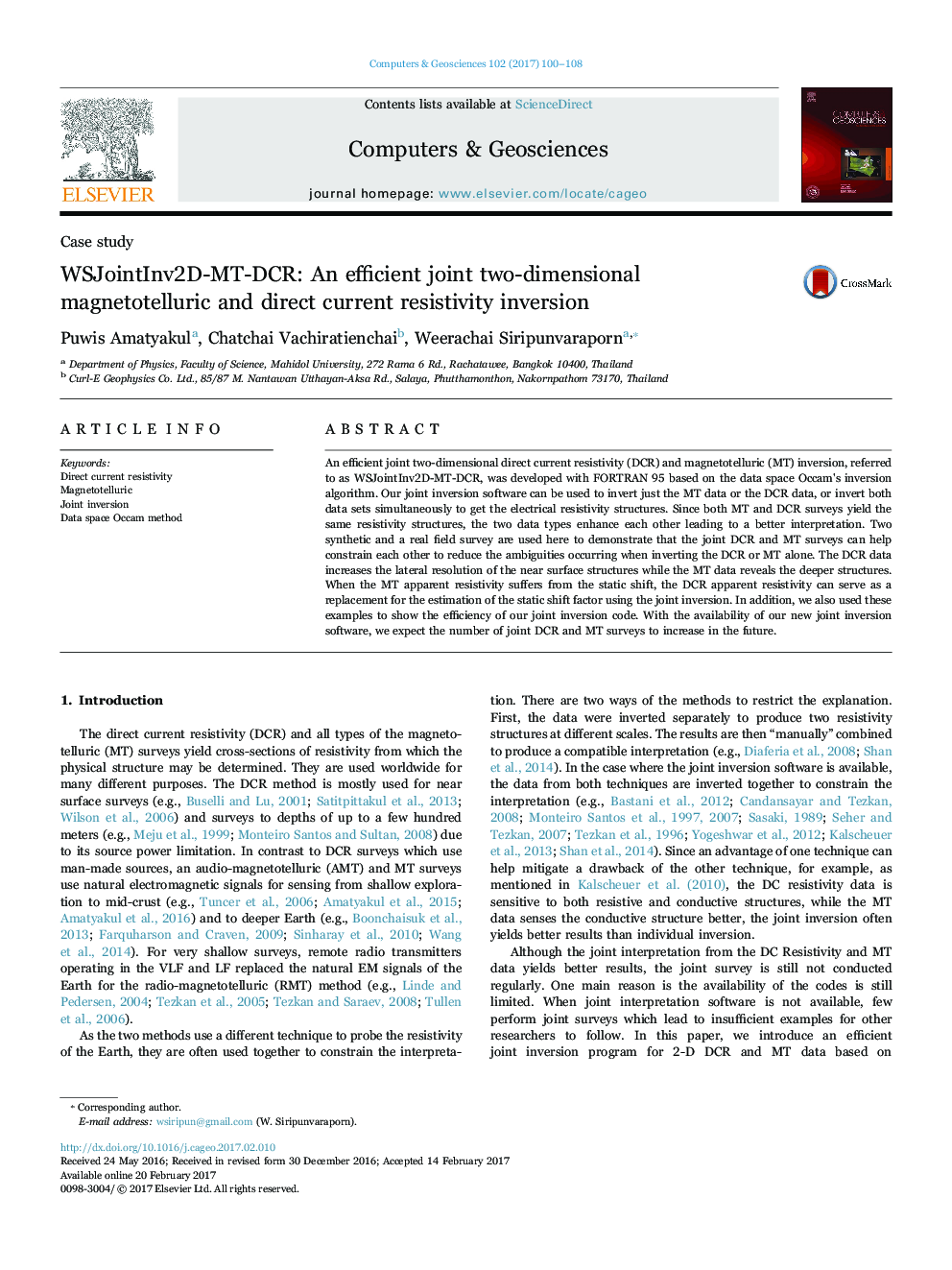| Article ID | Journal | Published Year | Pages | File Type |
|---|---|---|---|---|
| 4965337 | Computers & Geosciences | 2017 | 9 Pages |
Abstract
An efficient joint two-dimensional direct current resistivity (DCR) and magnetotelluric (MT) inversion, referred to as WSJointInv2D-MT-DCR, was developed with FORTRAN 95 based on the data space Occam's inversion algorithm. Our joint inversion software can be used to invert just the MT data or the DCR data, or invert both data sets simultaneously to get the electrical resistivity structures. Since both MT and DCR surveys yield the same resistivity structures, the two data types enhance each other leading to a better interpretation. Two synthetic and a real field survey are used here to demonstrate that the joint DCR and MT surveys can help constrain each other to reduce the ambiguities occurring when inverting the DCR or MT alone. The DCR data increases the lateral resolution of the near surface structures while the MT data reveals the deeper structures. When the MT apparent resistivity suffers from the static shift, the DCR apparent resistivity can serve as a replacement for the estimation of the static shift factor using the joint inversion. In addition, we also used these examples to show the efficiency of our joint inversion code. With the availability of our new joint inversion software, we expect the number of joint DCR and MT surveys to increase in the future.
Related Topics
Physical Sciences and Engineering
Computer Science
Computer Science Applications
Authors
Puwis Amatyakul, Chatchai Vachiratienchai, Weerachai Siripunvaraporn,
